Home > Auctions > 4 June - 8 June 2024
Ancient Art, Antiquities, Natural History & Coins
Auction Highlights:
Acquired in the mid 1980s-1990s.
From the family collection of Mr S.A., Switzerland, thence by descent.
Private collection since the late 1990s.
This lot has been checked against the Interpol Database of stolen works of art and is accompanied by a search certificate number no.12143-218210.
Cf. Menghin, W., The Merovingian Period. Europe Without Borders, Berlin, 2007, item IX.6.9, for larger type.
From the collection of Adolphe Stoclet, 1871-1949.
Cf. Menghin, W., The Merovingian Period. Europe Without Borders, Berlin, 2007, item IX.3.2 (Badajoz, Spain); Heynowski, R., Bestimmungsbuch Archaeologie: Gürtel, Munich, 2017, type 8.4.
Georges A Salles and Daisy Lion-Goldschmidt, Adolphe Stoclet Collection (part I), Brussels, 1956, p.137 (d).
The buckle plate is large and impressive, while the loop is somewhat narrower and may have been replaced. Cruciform motifs on the buckle plate are a feature of Visigothic belt-sets at this time. The use of malachite is unusual for this period, but semi-precious stones of various types appear on such plates (e.g. Menghin, IX.1.1).
From the collection of Adolphe Stoclet, 1871-1949.
This lot has been checked against the Interpol Database of stolen works of art and is accompanied by a search certificate number no.12138-217045.
Cf. Heynowski, R., Bestimmungsbuch Archaeologie: Gürtel, Munich, 2017, 8.4.1, for buckle type.
Georges A Salles and Daisy Lion-Goldschmidt, Adolphe Stoclet Collection (part I), Brussels, 1956, p.137 (d).
The buckle plate is long and narrow and the loop is proportionate in size, but the inset glass elements have suffered from abrasion and usage wear. Normally, the buckle plate would have four pierced attachment lugs to the reverse, but the reverse of this plate is plain. The large gold-covered panel resembles a phalera or harness fitting rather than a belt-buckle fitting. On this basis, it is suggested that the item is likely a marriage of a belt-buckle with a harness fitting.
Found whilst searching with a metal detector near Drayton, Vale of the White Horse, Oxfordshire, UK, on Sunday 16th September 2018 by Chris Weir.
Declared as treasure under the Treasure Act with reference no.2018T853, subsequently disclaimed and returned to the finder.
Accompanied by a copy of the British Museum's Portable Antiquities Scheme (PAS) report no.GLO-0BFB91.
Accompanied by a letter from the finder describing the circumstances of finding.
This lot has been checked against the Interpol Database of stolen works of art and is accompanied by search certificate no.12118-214086.
Cf. PAS-804C91/2002 T248, a similar ring also dated to the 13th century; a similar ring with an inscribed hoop read over two lines was recorded as 2002 T257, also with enigmatic inscription interpreted as most likely having romantic or magical significance.
Many late medieval rings and brooches bear similarly meaningless inscriptions, perhaps due to the illiteracy of the engraver who nevertheless was aware that customers required an inscription, so provided one. Alternatively, since the text is composed from repeated sequences 'NI', 'AI', etc. based on an open syllabic structure, the words may be intended as a chant or magical charm. For discussion of such inscriptions see Evans, J., Magical Jewels of the Middle Ages and the Renaissance, Oxford, 1922, pp.121-132, for inscribed jewels.
Found whilst searching with a metal detector near Witham on the Hill, South Kesteven, Lincolnshire, UK, on Sunday 9th January 2022, by Mark Bowen.
Accompanied by a copy of the British Museum's Portable Antiquities Scheme (PAS) report no.CAM-D675E8.
Accompanied by a copy of the Department for Digital, Culture, Media and Sport Treasure receipt and and disclaimed with Treasure case tracking no.2022T153.
This lot has been checked against the Interpol Database of stolen works of art and is accompanied by a search certificate number no.12139-214843.
Cf. Hindman. S. et al., Toward an Art History of Medieval Rings: A Private Collection, London, 2007, item 26, for similar script on an English gold ring; see Jones, M., 'The Beautiful Game - Courtly Love posies in Anglo-Norman inscribed on jewellery and seals', in The Journal of the British Archaeological Society (forthcoming), for inscription.
The final word of the inscription is ie for ie[u], an Anglo-Norman spelling of modern French jeu ‘game’. The game in question is, of course, love (not football!). The ‘game’ of love here is what we now refer to as Courtly Love (amour courtois, fin amor) and the phrase ‘beautiful game’ is also found on another ring recorded on the PAS database as YORYM-0A0FD2, the whole, a rhyming couplet, reading AMIE EN VV/ [E]ST MA VIE BELE GIEV [Beloved, in you my life is a beautiful game].
Found whilst searching with a metal detector near Frinton, Essex, UK, on Thursday 25th May 2023, by Jim Ridge.
Accompanied by a copy of the British Museum's Portable Antiquities Scheme (PAS) report no.ESS-0840AB.
Accompanied by a copy of a letter, and video from the finder explaining the circumstances of finding.
This lot has been checked against the Interpol Database of stolen works of art and is accompanied by a search certificate number no.12140-214660.
Cf. Chadour, A.B., Rings. The Alice and Louis Koch Collection, volume I, Leeds, 1994, item 562, for type.
Exhibited at Harwich Museum, Harwich, Essex, UK, 14th March-9th June 2024; accompanied by a copy of a photograph of the artefact on display.
From an old French collection believed to have been formed in the 1960s.
Acquired privately as part of a collection in the early 1990s.
Accompanied by a copy of a previous illustrated catalogue information page.
This lot has been checked against the Interpol Database of stolen works of art and is accompanied by a search certificate number no.12141-214818.
Cf. Content, D.J. (ed.), Islamic Rings & Gems. The Zucker Collection, London, 1967, item 72, for type.
From an old UK collection.
Acquired from Derek Content, UK, in the early 1990s.
This lot has been checked against the Interpol Database of stolen works of art and is accompanied by a search certificate number no.12142-214824.
Cf. Oman, C.C., British Rings 800-1914, London, 1974, item 71(b).
From an old French collection believed to have been formed in the 1960s.
Acquired privately as part of a collection in the early 1990s.
Accompanied by a copy of a previous illustrated catalogue information page.
Cf. Chadour, A.B., Rings. The Alice and Louis Koch Collection, volume I, Leeds, 1994, item 541, for type.
From the Smith family collection, formed in the late 1940s-1980s.
Accompanied by an academic report by Dr Raffaele D’Amato.
This lot has been checked against the Interpol Database of stolen works of art and is accompanied by a search certificate number no. 12045-217155.
Cf. for gemstones with an aquila also associated with images of Jupiter and Serapis, Walters, H.B., Catalogue of Engraved Gems & Cameos, Greek, Etruscan & Roman in the British Museum, London, 1926, no.1273; Sena Chiesa, G., Gemme del Museo Nazionale di Aquileia (Associazione Nazionale per Aquileia), Padova, 1966, nos.39-40; Zwierlein-Diehl, E., Die antiken Gemmen des Kunsthistorischen Museums in Wien, vol. 2, Munich, 1979, no.1247; Philipp, H., Mira et Magica: Gemmen im Äegyptischen Museum der Staatlichen Museen PreuBischer Kulturbesitz, Berlin-Charlottenburg, Mainz, 1986, nos.57-58; D’Amato, R., Roman Standards & Standard-Bearers (1), 112BC-AD192, Oxford, 2018, p.27.
Often the military intaglio gemstones of the ancient Rome were carved with an eagle between two standards. These intaglios could have been inserted in rings that belonged to an officer with the rank of Aquilifer (bearer of the legionary eagle). From the 4th century A.D., the vision of Ezekiel and John's Apocalypse, assigned the lion, the angel, the eagle, and the ox a place in the iconography of the Tetramorph to represent the four evangelists.
Private collection of a North London lady before 2000.
Property of a London gentleman.
This lot has been checked against the Interpol Database of stolen works of art and is accompanied by a search certificate number no.12145-215540.
Cf. Oman, C.C., British Rings 800-1914, London, 1974, pl.26(c), 27(a,b).
From a 1980s family collection; thence by descent.
Property of a Yorkshire, UK, gentleman.
This lot has been checked against the Interpol Database of stolen works of art and is accompanied by a search certificate number no.12149-216359.
Cf. Oman, C.C., British Rings 800-1914, London, 1974, pl.26(c), 27(a,b).
229 - 240 of 2809 LOTS

.jpg)

.jpg)
.jpg)
.jpg)
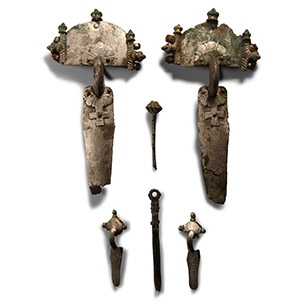

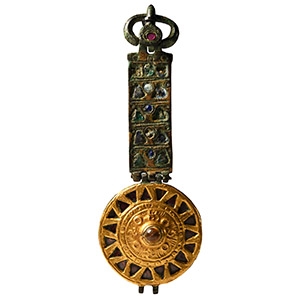
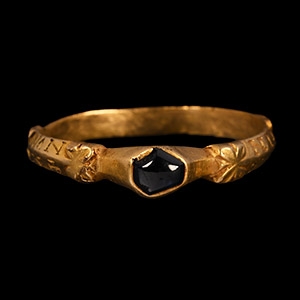
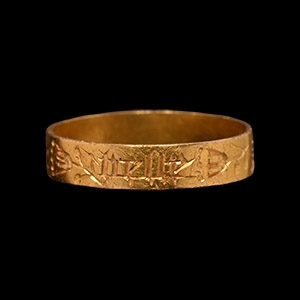
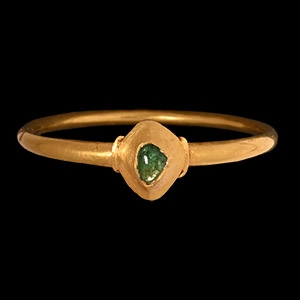
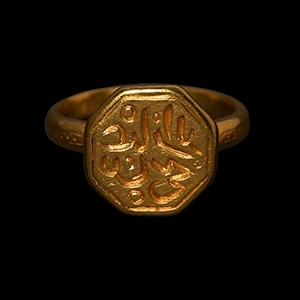
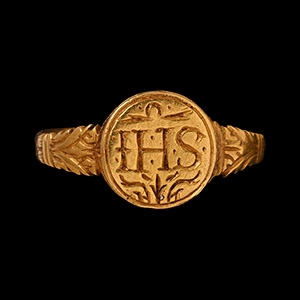
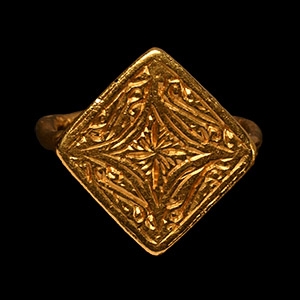
.jpg)





